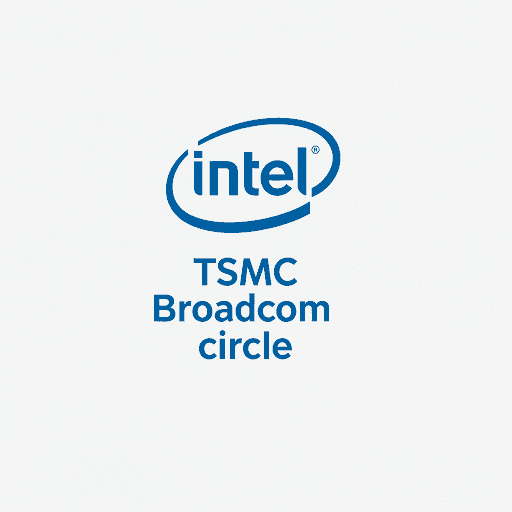Cloud Computing & Serverless Architecture: A Complete Guide.

Demystify Cloud Computing & Serverless Architecture. Learn definitions, real-world use cases, best practices, and why they're the future of software development.

Cloud Computing & Serverless Architecture: A Complete Guide.
Beyond the Hype: A Realist's Guide to Cloud Computing and Serverless Architecture
If you've been anywhere near the world of technology in the last decade, you’ve heard the terms "Cloud Computing" and "Serverless Architecture." They’re buzzy, they’re powerful, and frankly, they’ve fundamentally changed how we build and use software. But what do they really mean? Beyond the marketing jargon, how do they work, and more importantly, how can you, as a developer or tech enthusiast, leverage them?
This isn't just another surface-level article. We're going to dive deep. We'll start with the foundational concepts of cloud computing, build our way up to the paradigm-shifting world of serverless, explore real-world applications, discuss best practices, and answer your burning questions. By the end, you'll have a clear, practical understanding of why these technologies are more than just a trend—they're the new normal.
Part 1: Laying the Foundation - What is Cloud Computing?
Let's start by demystifying the "cloud." In the simplest terms, cloud computing is the on-demand delivery of IT resources over the internet with a pay-as-you-go pricing model.
Instead of buying, owning, and maintaining physical data centers and servers, you can access technology services, like computing power, storage, and databases, from a cloud provider like Amazon Web Services (AWS), Microsoft Azure, or Google Cloud Platform (GCP).
Think of it like this:
The Old Way (On-Premises): Building your own power plant to electricity your house. It's expensive, you're responsible for all maintenance, and scaling up if you need more power is a huge project.
The Cloud Way: Paying an electricity company for power. You only pay for the kilowatts you use, the company manages the power plant, and you can easily use more or less power whenever you need to.
The Essential Service Models of Cloud Computing
Cloud services are typically categorized into three main models, often visualized as a stack.
1. Infrastructure as a Service (IaaS)
This is the most basic building block. IaaS provides you with the fundamental infrastructure: virtual machines, storage, networks, and operating systems. You rent these IT resources instead of buying them outright.
What you manage: The operating system, runtime, middleware, and your applications.
What the provider manages: The physical hardware, virtualization, servers, and storage.
Analogy: Renting a plot of land. You can build whatever house you want, but you're responsible for the construction, plumbing, and electricity. The landlord just provides the space.
Examples: AWS EC2 (Elastic Compute Cloud), Google Compute Engine, Microsoft Azure VMs.
2. Platform as a Service (PaaS)
PaaS provides a platform allowing you to develop, run, and manage applications without the complexity of building and maintaining the underlying infrastructure. It's designed to make the developer's life easier.
What you manage: Your application code and its data.
What the provider manages: The runtime, middleware, operating system, virtualization, servers, and storage.
Analogy: Moving into a furnished apartment. The building, furniture, utilities, and maintenance are handled. You just bring your personal belongings and live your life.
Examples: AWS Elastic Beanstalk, Google App Engine, Heroku.
3. Software as a Service (SaaS)
SaaS delivers a complete, fully functional application over the internet, on a subscription basis. This is the cloud service model most people interact with daily.
What you manage: Nothing but your data and user settings.
What the provider manages: Everything—the application, data, runtime, middleware, OS, virtualization, servers, and storage.
Analogy: Staying in a hotel. You use the room, the bed, and the amenities, but you have no responsibility for maintenance. You just pay for your stay.
Examples: Gmail, Salesforce, Slack, Netflix.
The Deployment Models: Public, Private, and Hybrid
Public Cloud: Services are delivered over the public internet and shared across multiple organizations. It's the most common and cost-effective model (e.g., AWS, Azure, GCP).
Private Cloud: The cloud infrastructure is used exclusively by a single organization. It offers more control and security, often at a higher cost. It can be hosted on-premises or by a third-party provider.
Hybrid Cloud: A combination of public and private clouds, allowing data and applications to be shared between them. This offers greater flexibility and optimization of existing infrastructure.
Part 2: The Evolution - Enter Serverless Architecture
Now that we have a solid grasp of cloud computing, let's talk about its most revolutionary offspring: Serverless Architecture.
First, let's clear up a massive misconception: Serverless does not mean there are no servers involved. The code still runs on servers. The key difference is abstraction.
Serverless computing is a cloud-native development model that allows developers to build and run applications without having to manage servers.
The cloud provider dynamically manages the allocation and provisioning of servers. Your code executes in a stateless compute container that is event-triggered, ephemeral (lasting for one invocation), and fully managed by the cloud provider. The most common execution model is Functions as a Service (FaaS).
Core Characteristics of Serverless
No Server Management: You don't have to provision, scale, or maintain any servers. The cloud provider does all the heavy lifting.
Event-Driven and Scalable: Code is executed in response to events. An event could be an HTTP request, a file upload, a database change, or a scheduled time. The platform automatically scales the number of function instances up or down based on the volume of events.
Pay-Per-Use: This is the game-changer. You are billed only for the compute time your code actually consumes, measured in milliseconds. If your code isn't running, you pay nothing.
Built-in Availability and Fault Tolerance: Serverless functions are inherently distributed and fault-tolerant. The cloud provider ensures they are available without you needing to architect for it.
How Does it Work? The FaaS Model
Imagine you have a function that resizes an image when it's uploaded to a storage bucket.
Event Trigger: A user uploads a profile picture (an image file) to an AWS S3 bucket.
Automatic Invocation: This upload event automatically triggers an AWS Lambda function (your serverless function).
Execution: The Lambda function runs your code. It retrieves the image, resizes it to different dimensions, and saves the new versions back to the S3 bucket.
Shutdown: The function finishes its task and shuts down. You are billed only for the time it took to resize the image (e.g., 800 milliseconds).
Scaling: If 100 users upload images simultaneously, the cloud provider spins up 100 concurrent instances of your function to handle the load, without any intervention from you.
This is a profound shift from the traditional model of running a server 24/7, whether it's handling requests or sitting idle, and paying for that constant uptime.
Part 3: Real-World Use Cases - Where Serverless Shines
Serverless isn't a silver bullet for every problem, but it's exceptionally well-suited for specific scenarios.
1. APIs and Backends
Building a RESTful API backend is a perfect use case. Each API endpoint (e.g., GET /users, POST /orders) can be mapped to a separate serverless function. This creates a highly scalable and cost-effective backend where you only pay for the API calls you receive.
2. Data Processing
As in our earlier example, serverless is ideal for ETL (Extract, Transform, Load) jobs or processing data streams. You can trigger functions in response to new data arriving in a database, a message in a queue, or a file landing in cloud storage.
3. Scheduled Tasks (Cron Jobs)
Need to run a task every night at 2 AM to generate a daily report or clean up a database? Instead of running a dedicated server that sits idle for 23.5 hours a day, you can use a serverless function triggered by a timer. You pay only for the few seconds the task runs.
4. Chatbots and Virtual Assistants
Chatbots are inherently event-driven. A user sends a message, which triggers a function to process the intent and generate a response. The auto-scaling nature of serverless handles traffic spikes during promotions or peak hours effortlessly.
5. IoT (Internet of Things) Backends
Thousands of IoT devices (sensors, smart devices) can send telemetry data to the cloud. Serverless functions can be triggered for each data packet to process, filter, and store the information in a database, scaling seamlessly with the number of devices.
Part 4: Best Practices for Building with Serverless
Jumping into serverless requires a slight mental shift. Here are some key principles to follow:
Write Small, Single-Purpose Functions: Design each function to do one thing and do it well. This aligns with the microservices philosophy and makes functions easier to debug, secure, and scale.
Embrace Statelessness: Since function instances are ephemeral, avoid storing state (session data) inside them. Use external services like databases (Amazon DynamoDB) or caches (Amazon ElastiCache) for persistence.
Leverage Asynchronous Processing: For long-running tasks, don't make a user wait for the function to complete. Use an event queue (like AWS SQS or SNS) to trigger the function and immediately return a response to the user.
Secure Your Functions: Apply the principle of least privilege. Give your functions only the exact permissions they need to interact with other AWS services (e.g., read from one specific S3 bucket, nothing else).
Monitor and Log Everything: Use services like AWS CloudWatch to meticulously monitor your functions' performance, execution times, and errors. Proper logging is crucial for debugging in a distributed environment.
Mastering these architectural patterns is a key skill for modern developers. To learn professional software development courses such as Python Programming, Full Stack Development, and MERN Stack, which are perfectly suited for building these kinds of cloud-native applications, visit and enroll today at codercrafter.in. Our curriculum is designed to take you from fundamentals to advanced cloud deployment.
Part 5: Frequently Asked Questions (FAQs)
Q1: Is serverless cheaper than traditional servers?
It depends on the workload. For applications with inconsistent, sporadic, or unpredictable traffic, serverless is almost always cheaper because you avoid paying for idle server time. For applications with steady, high-traffic loads 24/7, provisioning dedicated servers (like EC2 instances) might be more cost-effective. It's crucial to analyze your traffic patterns.
Q2: What about "cold starts"?
A "cold start" is the latency that occurs when a function is invoked after being idle. The platform needs to provision a runtime environment before executing your code. This can add a delay of a few hundred milliseconds. For real-time, latency-sensitive applications, this can be a concern. However, providers are constantly improving cold start times, and there are strategies to mitigate them (like provisioned concurrency).
Q3: Are there vendor lock-in risks with serverless?
Yes, this is a valid concern. Each cloud provider has its own proprietary interfaces for triggers, SDKs, and deployment frameworks. Code written for AWS Lambda might not directly port to Azure Functions. To minimize lock-in, you can use abstraction frameworks like the Serverless Framework or design your business logic to be as platform-agnostic as possible.
Q4: How do I debug and test serverless functions?
Debugging can be more challenging than in a monolith. It requires a heavy reliance on distributed logging and tracing tools like AWS X-Ray. For testing, it's best to test your function logic locally as much as possible and then use tools provided by the serverless framework to simulate the cloud environment for integration tests.
Q5: Can serverless handle long-running tasks?
Most serverless platforms have a maximum execution timeout (e.g., 15 minutes for AWS Lambda). Therefore, they are not suitable for tasks that run for hours. For such workloads, you would use a different service, like containers (AWS Fargate) or virtual machines.
Conclusion: The Future is Event-Driven
Cloud Computing democratized access to infrastructure. Serverless Architecture is democratizing scalability and operational efficiency. It represents a fundamental shift in mindset—from thinking about servers and infrastructure to thinking about events and business logic.
While it's not the answer to every computational problem, its benefits of reduced operational complexity, inherent scalability, and cost-effectiveness for variable workloads are undeniable. It empowers small teams to build and operate applications that can scale to serve millions of users, all without a dedicated operations team.
The future of application development is increasingly event-driven and composed of managed services. Understanding serverless is no longer a niche skill; it's becoming a core competency for developers who want to build robust, modern applications.
Ready to stop managing servers and start building the future? The journey begins with a solid foundation in programming and cloud principles. Explore the comprehensive courses at codercrafter.in to gain the hands-on skills needed to excel in this exciting field.









